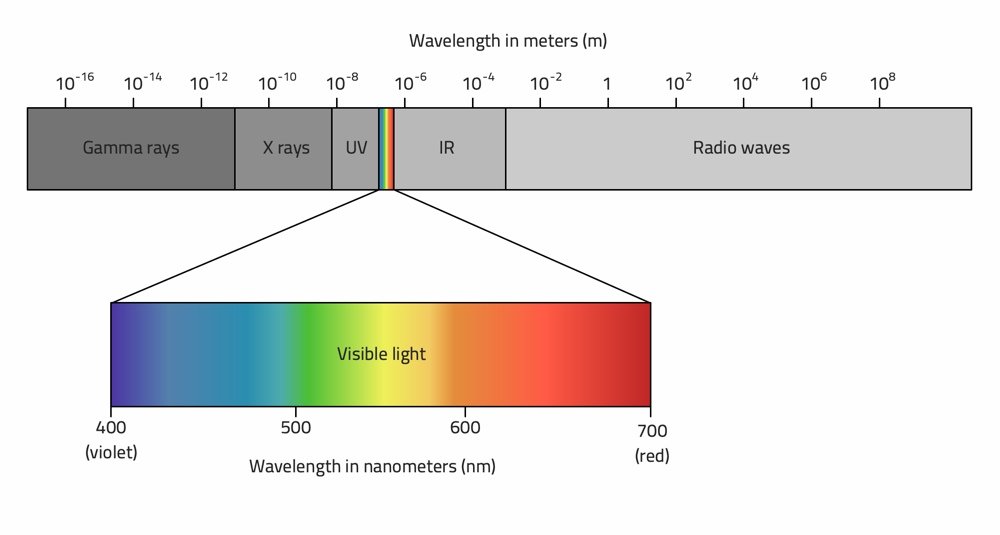Components of electromagnetic spectrum
Is the world exactly as we see it? It is not so simple. For example, some animals, such as bees, can see parts of electromagnetic spectrum that we can not see (such as ultraviolet light or infrared): the world does not appear to them as to us. Our eyes are in fact sensitive to wavelengths between 400 and 700 nanometers (1 nanometer is one millionth of a millimeter). Instead electromagnetic spectrum is made up of many types of waves of which the visible is only a small area:

Radio waves: are characterized by higher wavelengths, greater than 1 millimeter. Higher frequency radio waves are called microwaves.
Infrared: with a wavelength between 700nm and 1mm, we humans we can not see it but we perceive it as heat on skin.
Visible light: with a wavelength between 700 and 400 nm, it is the part of electromagnetic spectrum that we can see and which is expressed through rainbow colors.
Ultraviolet: it has a wavelength between 400 to 10 nm and it is responsible for our tans.
X rays: characterized by a wavelength between 10 and 0.01 nm, they are very important for medical application because they are used for medical diagnostics.
Gamma rays: with a wavelength less than 0.01 nm, are those with greater energy.
Does this mean that if we want to study the Universe in ultraviolet it is enough to build a telescope for these wavelengths, have with a camera sensitive to ultraviolet and point it toward the heaven? No, because atmosphere of our Earth acts as a filter blocking large part of electromagnetic spectrum except the visible and radio one. That’s why you can use radio telescopes from the ground to study while for other frequencies it is necessary to construct and send special telescopes in space as satellites. In electromagnetic spectrum, radio window is extended from about 15 MHz (wavelength of about 20 meters) to 30 GHz (wavelength of about 1 cm). These limits are not clearly defined as they vary with altitude, geographic location and time.
